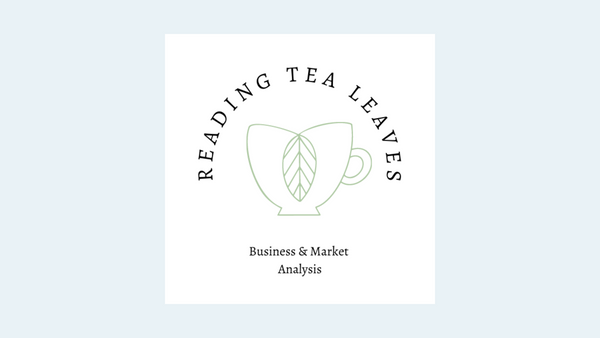
Reading the Tea Leaves - July 3rd, 2022
Here is the data, information, and news I have been reading over the past week. Plus, what it means for you.
Happy Sunday! At the beginning of every week, I analyze data, information, and news from the previous week as a way of informing my strategies for the upcoming weeks.
Today I thought I’d share with you the things I’ve been reading and what I think they mean for us all in terms of the business world and the financial markets.
U.S. GDP’s Early 2022 Dip Was Bigger Than Previous Thought (WSJ)
You might be familiar with the fact that economic data gets published on a set schedule. Some data is produced on a recurring monthly basis while others can be reported quarterly.
What you may not realize is that data is revised after the originally reported information is released.
For example, consumer spending was originally estimated at 3.1% for Q1 2022. The revised number is nearly half of that, at 1.8%.
Reading the Tea Leaves
Clearly, consumers were already pulling back on their spending, well ahead of what most experts recognized. This is something I missed as well. I suspected that consumer spending, consumer confidence, etc. had only slumped more recently.
With the revised numbers I am even more certain that we are in a recession. But, the level of consumer pullback tells me that we could exit the recession sooner than I originally planned. If the average recession lasts under 12 months and consumer spending was already much lower than we thought (which enables a recession) then we could see this current recession lasting even less time. Perhaps 9 months.
Powell Says Fed Must Accept Higher Recession Risk (WSJ)
Fed Chair Powell has been quoted recently as saying that his organization has to focus more on staving off continually high inflation than being concerned about a recession.
Reading the Tea Leaves
Expert opinion has been mixed as to whether the Fed will use another large Fed Funds Rate increase in July to halt inflation because the belief is that inflation is already beginning to cool. For example, the housing market has seen a noticeable decline, and mortgage rates even dipped a few days in June. However, inflation doesn’t seem to be cooly quickly enough to satisfy the Fed.
If inflation for June comes in dramatically lower than anticipated, which I don’t think will happen, the Fed could lower their rate increase to 50 bps. But, at this stage, I believe 75 bps is still the most likely scenario.
Crypto Taking a Beating, But Don’t Count It Out (Various)
Cryptocurrencies are still down dramatically and news of challenges continues to stream in. One sector of the industry includes companies that use cryptos as collateral for loans. Just within the past few weeks, one company was told it had to liquidate its entire business due to insolvency, while another was on the verge of being acquired and announced plans to layoff 25% of its staff.
Even top government agencies that are involved in the crypto markets still believe the crypto markets are here to stay.
Reading the Tea Leaves
This one feels pretty easy. One word- regulation.
Over 8 years ago I led a talk at a fintech conference where I said that for Bitcoin (the only real player at the time that most people knew about) to remain viable it needed to self-regulate. I understand that goes against the concept of decentralization. However, with all the volatility in the crypto markets plus all of the negative headlines, like those above, the crypto industry is going to have to agree to some level of regulation. Their best bet is to self-regulate and impose agreeable rules before the U.S. government decides to do it for them.